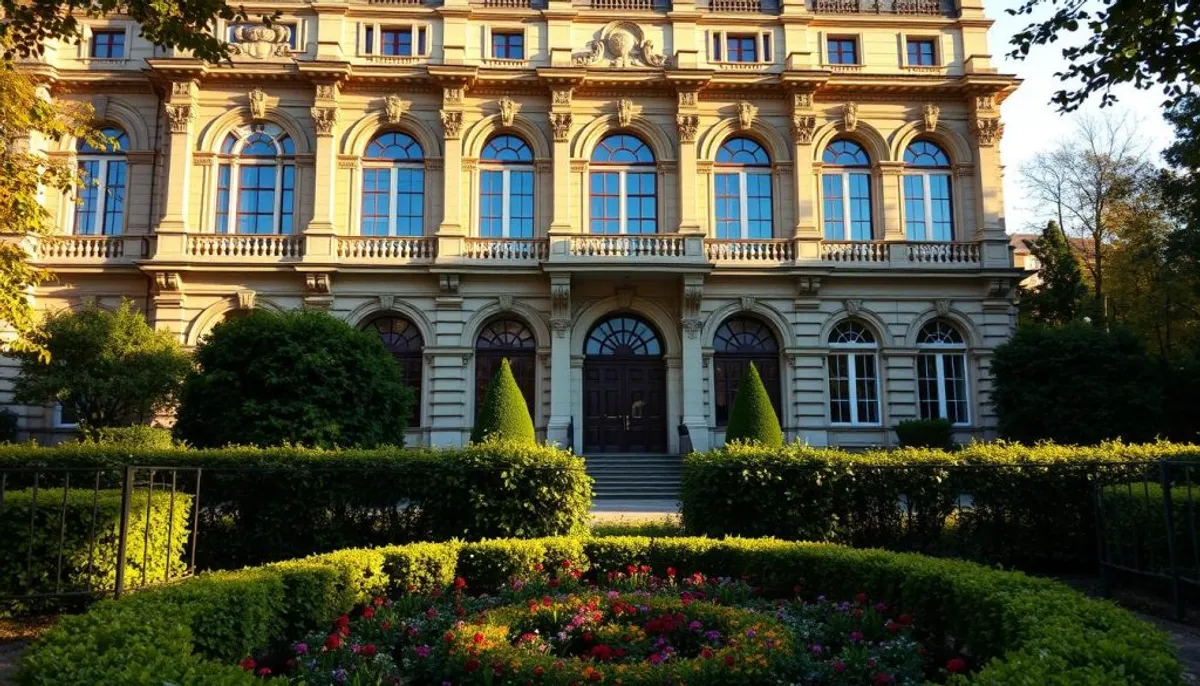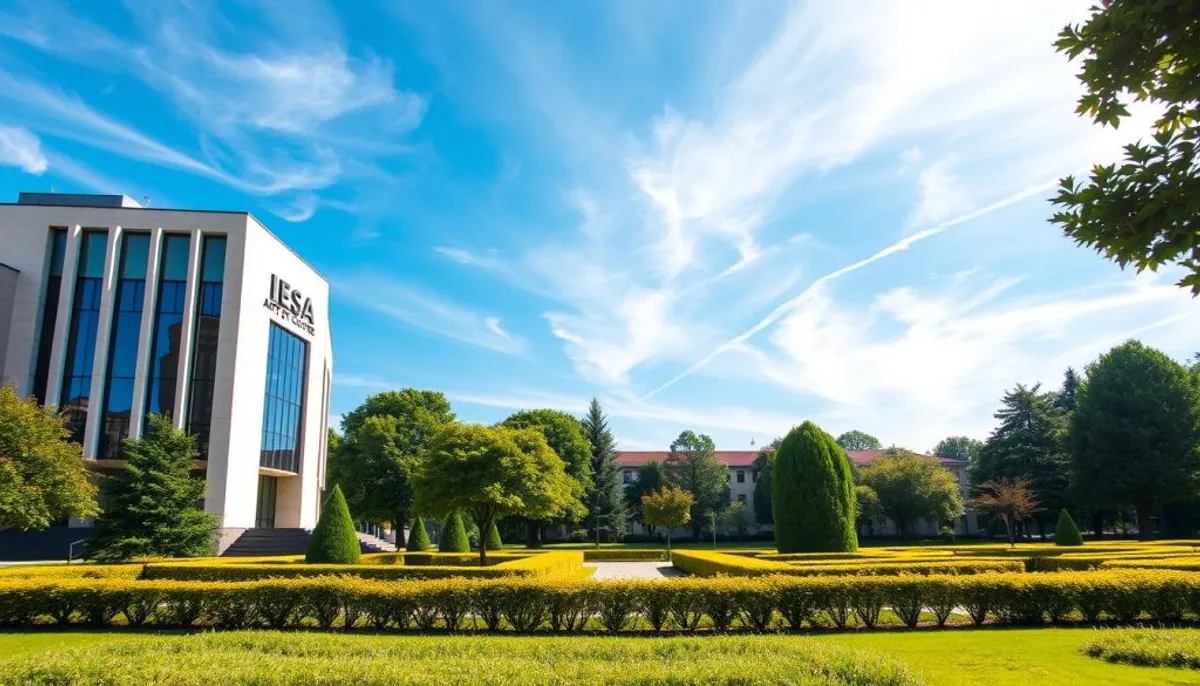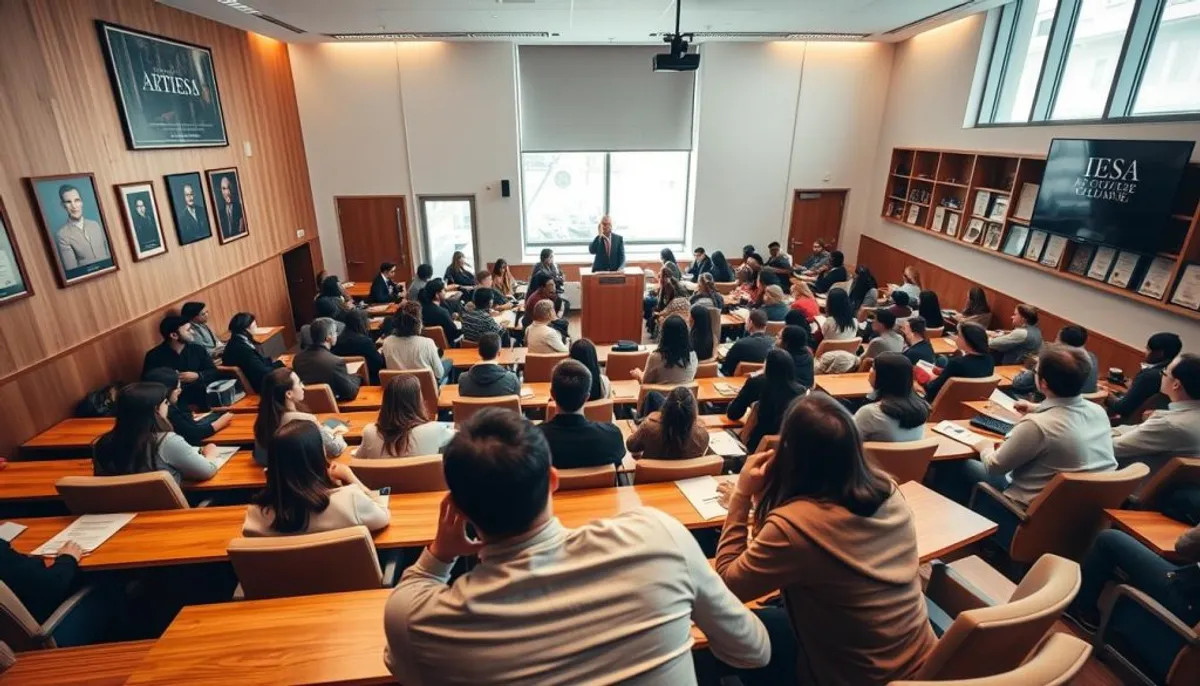The Higher Institute of Arts Studies (IESA) is a renowned artistic education institution in Paris. Founded in 1985, it offers a range of programs in the field of art and culture. These courses aim to educate future art professionals.
With an average satisfaction score of 3.8 out of 5, based on 13 reviews, IESA Arts and Culture stands out. It attracts students seeking a high-level artistic education. The school covers areas such as cinema, audiovisual, live performance, cultural heritage, and cultural production.

The testimonials about IESA Arts and Culture highlight its professional opportunities and its value equivalent to Master's degrees. The school is unique in Paris for its work-study programs in Master 1. Its quality instructors and practical teaching approach are particularly appreciated.
This article aims to provide a comprehensive overview of reviews on IESA Arts and Culture. It is based on the experiences of students and graduates. We will examine the strengths and challenges of this institution. This will help you make an informed decision for your future in art and culture.
General Overview of IESA Arts and Culture Paris
IESA Arts and Culture Paris, founded in 1985, stands out as a leader in artistic higher education. Located in the heart of Paris, this campus offers comprehensive training in the arts and culture. It prepares students to embrace a variety of careers.
History and Mission of the Institution
Since its foundation, IESA Arts and Culture Paris has established itself as a reference in art studies. Its mission is to train competent professionals for the art market and cultural industries. The school covers five key areas: Art Market, Heritage, Music, Live Performance, and Cinema & Audiovisual.
Location and Infrastructure
The campus, located in the heart of Paris, creates an ideal environment for art studies. It has modern infrastructure that meets the needs of art students. The spaces are designed to foster both artistic practice and theory.
Accreditations and Academic Recognition
IESA Arts and Culture Paris enjoys solid academic recognition. It offers training at the Bac+5 level, crucial in the cultural sector. The school provides Bachelor's, Master's, and Professional Master's degrees, with a strong emphasis on artistic practice, reaching 60% of the training.
| Features | Details |
|---|---|
| Levels of Study | Bachelor's, Master's, Professional Master's |
| Practice Time | 60% of the training |
| International Students | 25% of the student body |
| Research Center | 4 departments (Africa, Latin America, Asia, Europe) |
Training Programs and Specializations
IESA Arts and Culture offers a variety of artistic training programs. These programs lead to art degrees recognized in the cultural sector. Students can explore various specializations aligned with their professional goals.
Bachelor's and Master's Training
The institute covers training from Bachelor's to Master's level in several fields:
- Art Market: programs from 1 to 3 years
- Culture, Heritage, and Society: courses of 1 or 2 years
- Music and Live Performance: training from a few months to 3 years
- Cinema & Audiovisual: programs of 1 or 2 years
Specialization Options
Students can specialize in various fields:
- Art Market Expertise
- Cultural and Event Professions
- Multimedia
IESA offers an MBA in management of artistic and cultural activities, in English. This program allows for obtaining three recognized degrees.
Work-Study and Internship Modalities
The programs include international internships in Florence and Brussels. This practical approach enriches students' experiences in their artistic studies.

In 26 years, IESA Arts and Culture has trained over 12,000 individuals. Each year, about 1,000 students benefit from training tailored to the requirements of the professional sector.
Reviews on IESA Arts and Culture
IESA Arts and Culture, established in 1985, is distinguished by its quality artistic and cultural training. Feedback on IESA Arts and Culture is mostly positive, with an average score of 3.8/5 based on 13 evaluations. This rating reflects the institution's commitment to excellence in art and culture.
The artistic student life is highly appreciated by students. 30% of positive reviews highlight a friendly atmosphere and successful professional integration. The training, covering five areas, is designed to prepare students for diverse careers.
The courses are valued for their practical aspect, with about 60% of the time dedicated to professional practice. Seven evaluations emphasize the importance of internships in the training. However, it is important to note that some internships are unpaid, which may be a consideration.
| Aspect | Evaluation |
|---|---|
| Pedagogical and Administrative Support | 5 positive reviews |
| Administrative Issues | 4 occurrences |
| Lack of Contacts for Internships | 1 occurrence |
The cost of training varies: €4800 for 4 months and €8700 for 9 months. Despite some criticisms regarding administrative organization, the majority of students express their satisfaction. They highlight the quality of teaching and the professional opportunities offered by IESA Arts and Culture.
Quality of Teaching and Faculty
IESA Arts and Culture Paris stands out for the quality of its higher artistic education. It emphasizes a practical and immersive artistic training. This approach effectively prepares students for their future careers.
Expertise of Professional Instructors
The faculty at IESA consists of experts actively working in the world of art and culture. With an average seniority of 6 years, these professionals bring concrete and updated expertise. The training matrices are revised annually to adapt to changes in the cultural sector.

Teaching Methods
IESA prioritizes a pedagogical approach focused on practice. Students undertake real projects throughout their curriculum. This allows them to acquire concrete learning. The Applied Research Center in Contemporary Cultures, with its four international departments, enriches this artistic training with a global dimension.
Student Support
The school offers personalized support to students. The professionalization service works on each student's professional project. It helps with understanding the sector, knowledge of professions, and CV writing. Despite some criticisms regarding organization, most reviews highlight the significant support from professors, with an average satisfaction score of 3.8/5.
Student Life and Professional Opportunities
IESA Arts and Culture Paris creates a rich and stimulating artistic student experience. Students benefit from a unique education, with classes held in prestigious cultural venues. Museums, Drouot, and art galleries are examples. This immersion in art enriches their academic journey.
Artistic projects are at the center of the training. The school values creativity and innovation. Students undertake practical work and collaborate with cultural institutions. A Facebook group for internship announcements helps to build a professional network.
Careers in the arts are a major asset of IESA. The training programs are designed to meet market demands. Students obtain certified titles in various artistic and cultural fields. Long-term internships and theoretical and practical alternations are offered.
| Training | Level | Field |
|---|---|---|
| Consultant-specialist in cultural goods and services | Level II | Art Market |
| Cultural project administrator | Level I | Cultural professions |
| Multimedia project manager | Level II | Multimedia |
With over 12,000 individuals trained and about 1,000 students welcomed each year, IESA is a dynamic and multicultural environment. Graduates gain access to a wide range of professional opportunities in the arts and culture sector.
Conclusion
IESA Arts and Culture positions itself as a reference in artistic education, offering a range of training for artistic careers. Testimonials highlight the rigor of teaching and the professional prospects available to students.
The distinctive character of the institution lies in its interdisciplinary approach. It combines art history, aesthetics, and anthropology. This approach allows students to familiarize themselves with a variety of arts, from music to visual arts. They thus acquire a deep understanding of cultural and historical contexts.
However, the school faces criticisms regarding its administrative organization. Nevertheless, IESA Arts and Culture remains an attractive option for those aiming for an artistic career. Aspiring students are encouraged to weigh these aspects in their decision. They are encouraged to reach out directly to the institution for up-to-date information.
RelatedRelated articles


